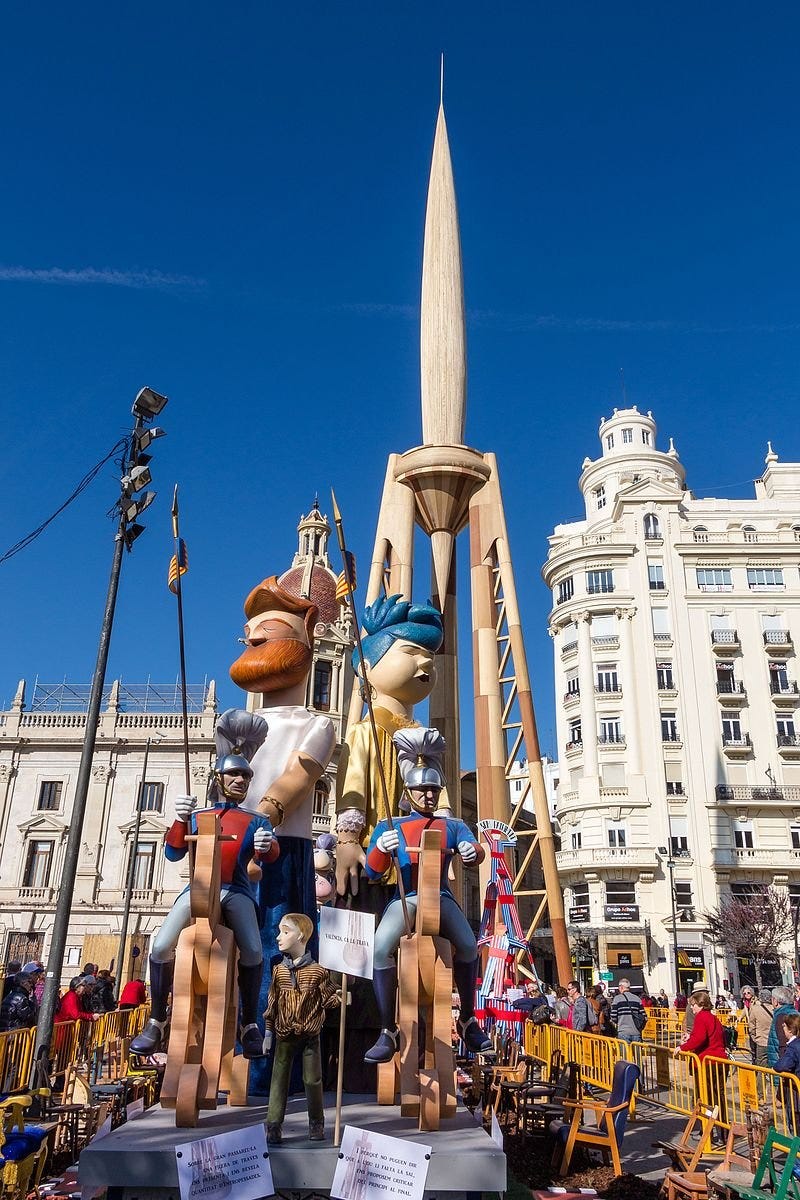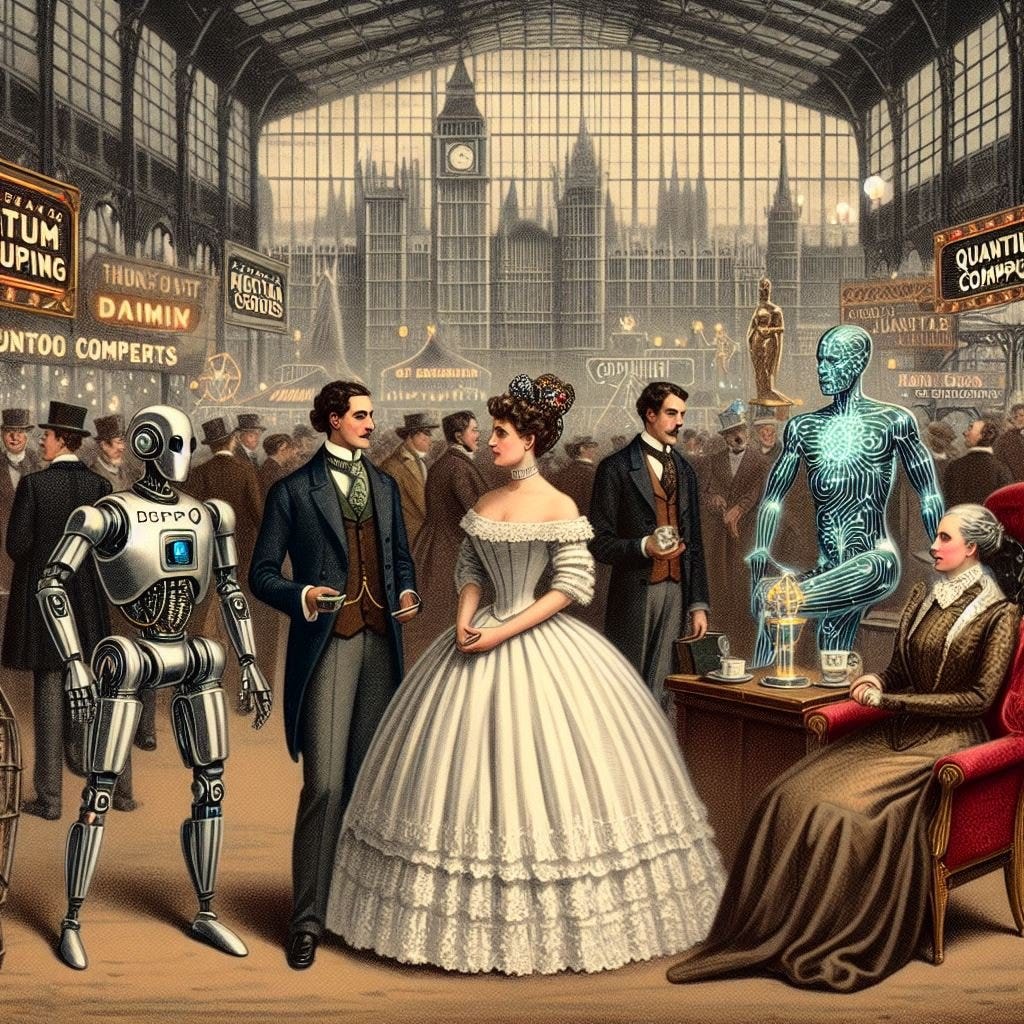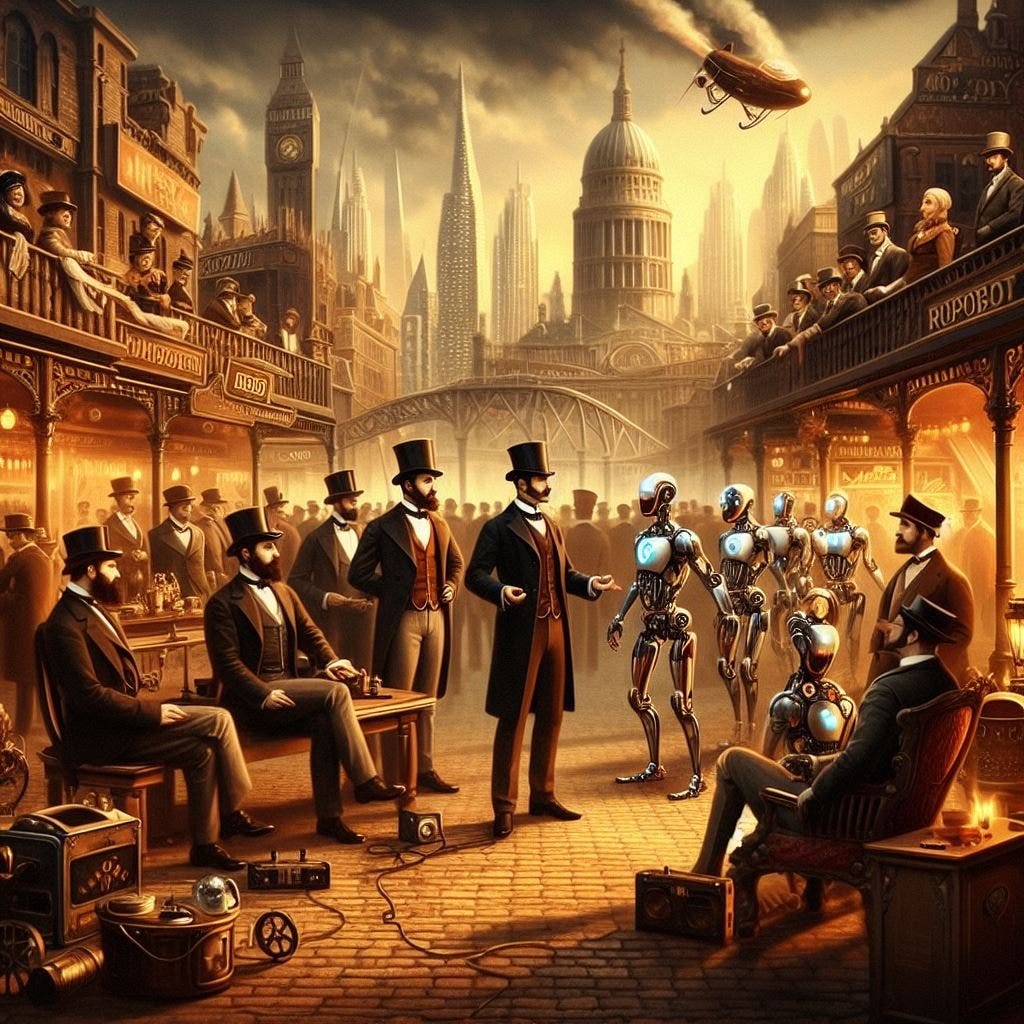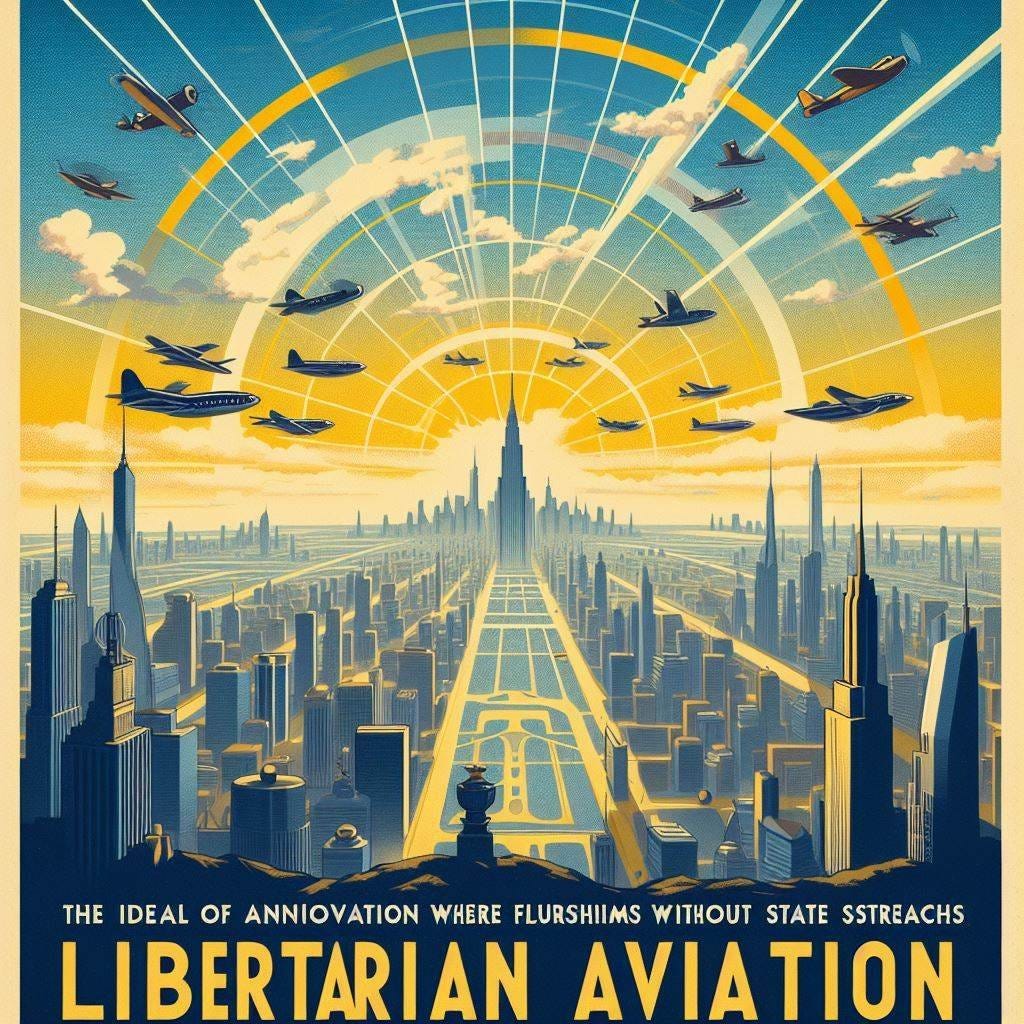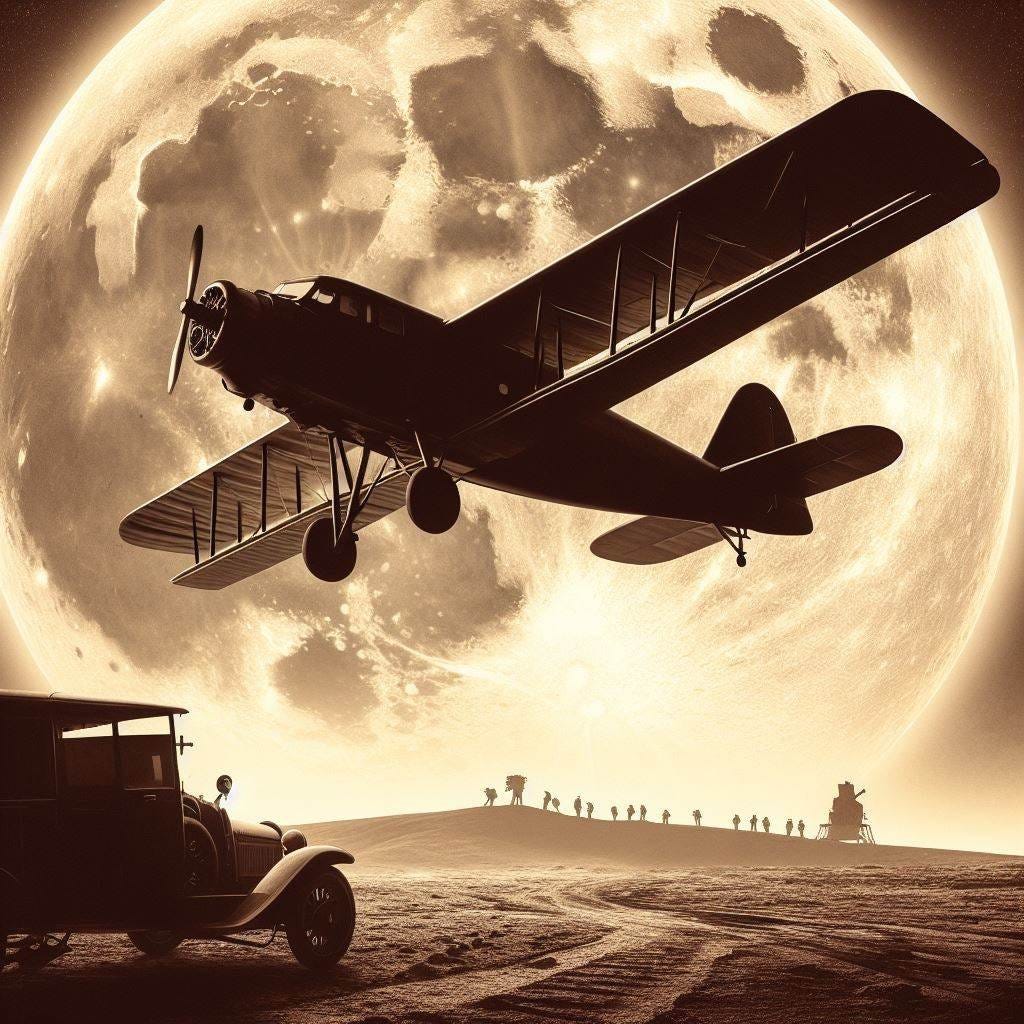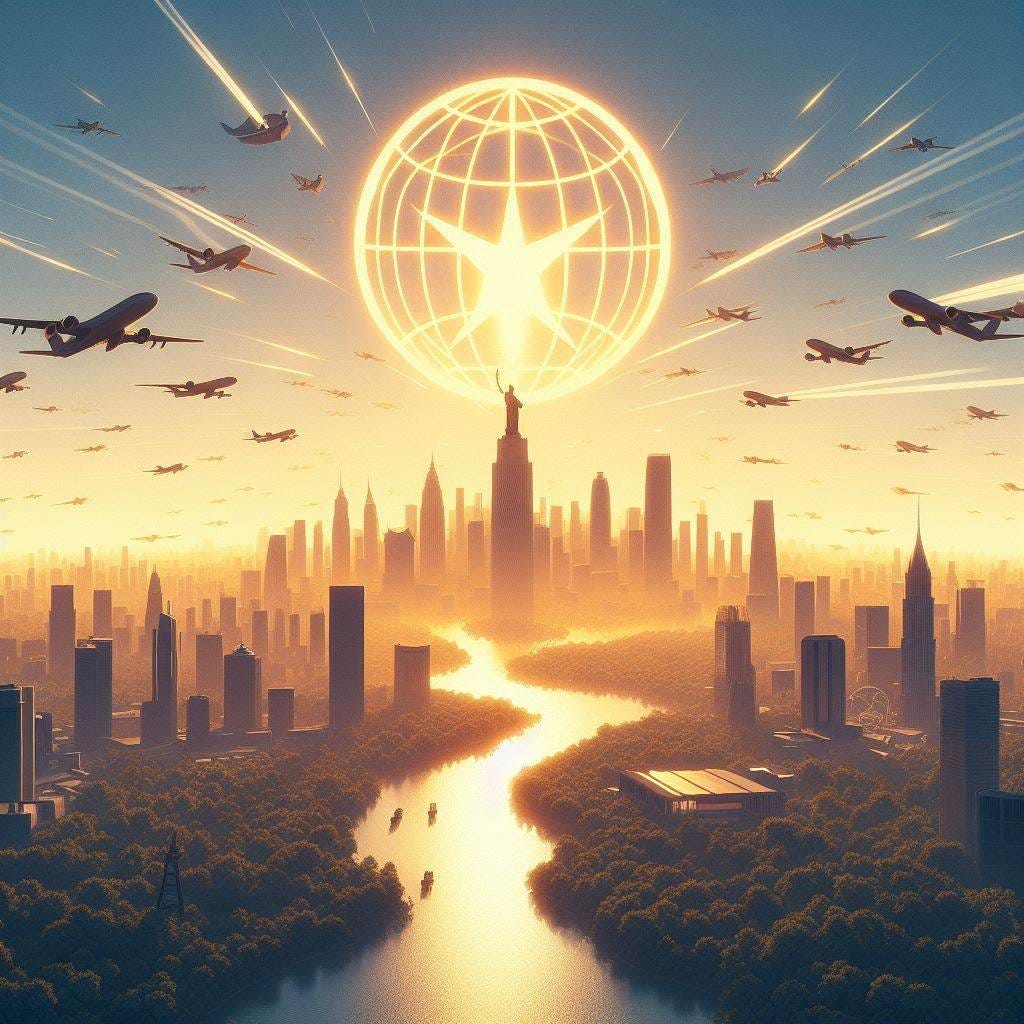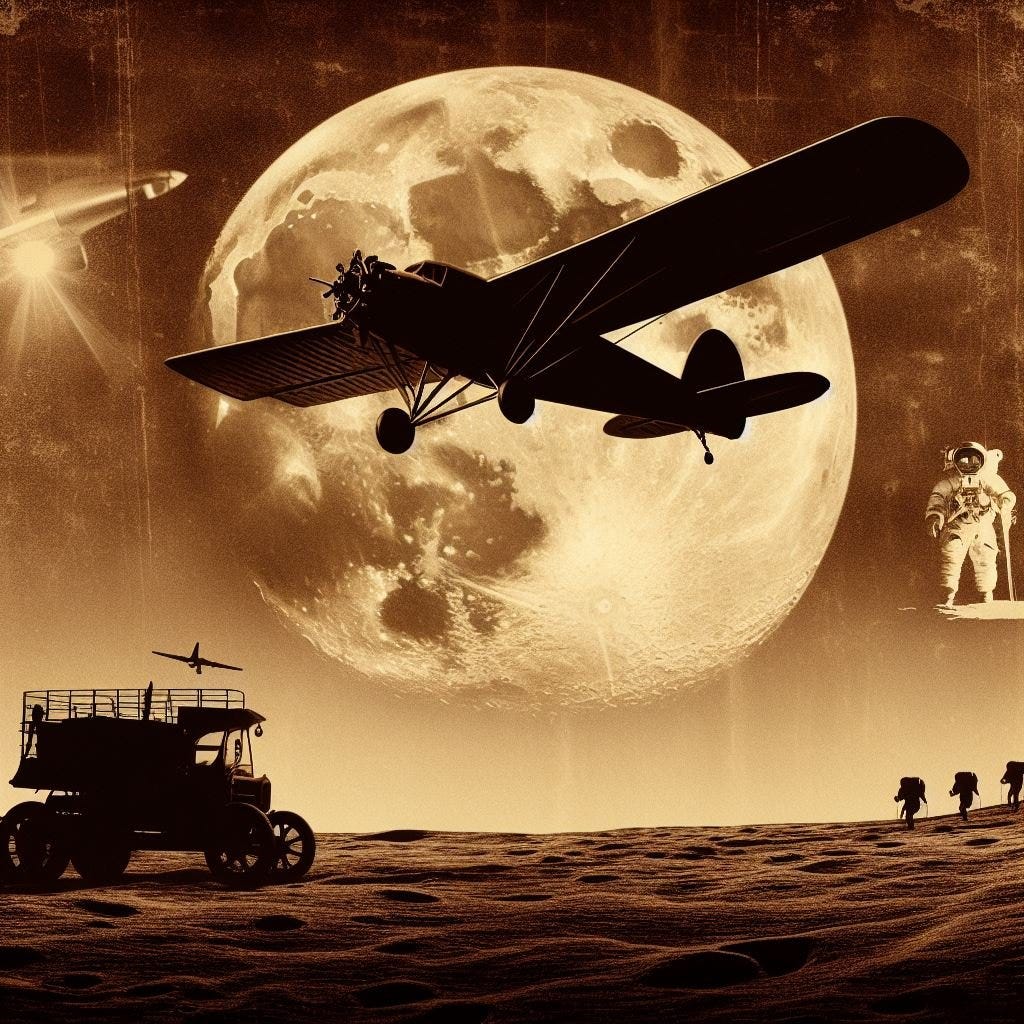#9 - R&V Journal
#9 will cover: Les Falles The Ultimate Fusion of Art and Engineering + Tech Giants and Celeb A-Listers + The Birth of Libertarian Aviation.
Reinassance Ventures Lab Journal (R&V Journal) is a compilation of ideas emerged throughout the week in our laboratory, which is Renaissance Venture Lab, to provide a fresh perspective on reality and current affairs.
This week's headlines include:
Les Falles: The Ultimate Fusion of Art and Engineering
Many festivities take place across the globe: New Year's Eve, Chinese New Year, St. Patrick's Day, Carnivals, and many others. All are cultural events that unite communities around symbolism, tradition, knowledge, and human ingenuity. However, I firmly believe there's no event in the world that combines as many human arts as Les Falles.
But what are Les Falles?
A Valencian Falla, simply known as "Falla," is an ephemeral and artistic monument, typically constructed with flammable materials, erected during the Falles celebrations in the city of Valencia, Spain. These celebrations, occurring from March 15th to 19th, commemorate Saint Joseph, the patron saint of carpenters. Les Falles are renowned for their colorful and intricate monuments, often depicting political, social, or cultural satires, and are burned at the end of the festivities during the "La Cremà," symbolizing renewal and the onset of spring.
A Falla typically consist of a central figure or composition several meters tall, with the largest exceeding 30 meters (the Na Jordana falla in 2001, at 33 meters, was the tallest and most voluminous in history), surrounded by numerous cardboard, clay, stone, or polyurethane figures (in recent years, materials like expanded polystyrene have replaced polyurethane for being lighter and more moldable), supported by a wooden framework. They include signs written in Valencian explaining the meaning of each scene, always with a critical and satirical sense.
Behind each of these monuments, nearly 1000 of which are erected throughout the region, not only in Valencia capital but also in other cities like Gandia, Tavernes de la Valldigna, or Denia, a great deal of engineering work is required.
It all starts with an artistic idea, where the artistic aspect must be combined with the limitations of structural calculation to make all the fantasy possible. That requires a high level of both artistic and engineering talent. I don't believe there's anywhere else in the world such a profound symbiosis between art and engineering, on a scale of creating over 1000 works per year.
These seemingly impossible figures must withstand wind and rain and still stand tall. They are genuine engineering masterpieces, created solely for people's enjoyment and burned every year, ensuring that the artistic and engineering effort is constantly reinvented.
In fact, that talent, made in Valencia, is later exported in the form of set designs worldwide, from Hollywood to amusement parks like Disneylands, where they become part of the scenery and floats in parades.
Another unique aspect of Les Falles is Music.
Valencia has the highest density of musicians per inhabitant in the world. Music in this region is part of the landscape. Every small town, every neighborhood, has a music band, with its music school and its incessant flow of musical talent that spreads throughout the world with its notes.
Alongside the "Moros i Cristians" festivals also celebrated in the region, Valencia is the true musical superpower of the world, ahead of any other region. All that music is shared with everyone on the streets.
Due to this fertile ground, it's not uncommon to find Valencian musicians around the world's major orchestras and symphonies. Many of these musicians also participate in and create musical assets for the entertainment industry. From movies to video games. This is the case with GamesSymphonies, which specializes in video game soundtrack concerts; many of the musicians involved come from the Valencian musical ecosystem.
Many are also composers of music for both video games and movies. Well, all of this originates from Les Falles and the music culture that thrives within them.
We must also highlight everything related to the pyrotechnics used during all the festivities. From the famous "mascletà" to the fireworks displays held at night. As well as the gastronomy and a long list of cultural elements stemming from this grand event.
Lastly, it's worth noting the ability to organize millions of people and countless aspects that make these festivities unparalleled in the world. Everyone, with their capital and money, collaborates to make this finely oiled machinery move to create one of the highest achievements of human civilization. Bringing together art, technique, and management at very high levels. It's an example of what our species can achieve. On a small scale, it's a great example of optimistic accelerationism.
Imagine the same drive to elevate our species culturally and civilizationally on the Kardashev scale.
The spirit of Les Falles could be the solution. If you don't believe what I say, I invite you to come to Valencia next year and experience that feeling.
Tech Giants and Celeb A-Listers: The Perfect Pairing for Progress
At Nvidia's recent GTC event in San Jose, where they showcased their latest advancements in AI, it was a huge hit globally.
At this conference, you could see why $NVDA is worth nearly 2 trillion dollars in market capitalization, just behind Apple, Microsoft, and the Saudi oil giant Aramco. Nvidia is an innovation powerhouse, with a ton of talent packed into their team. But hey, that's old news, everyone knows it.
Among all the cool things at GTC over the three days, one thing that stood out to me was this video:
It shows a crowd pouring out of the conference stadium after talks by Jensen Huang and his crew. Among them, there were tons of famous faces, celebrities like George Lucas, Kendrick Lamar, Nas, Trevor Noah, Ashton Kutcher, and more. It reminded me of big events like the Super Bowl or a Taylor Swift concert, where everyone wants to be there because it's part of the culture.
Celebrity Endorsements and Societal Acceptance
Seeing so many celebs at a tech company's event, like it's a Super Bowl, really shows how intertwined entrepreneurship, technological advances, and business are with society's identity, especially American society.
It shows how ingrained the concept of technological and entrepreneurial progress is in American society. And when artists and public figures get involved in that progress, it pushes it forward even more.
It's not just that these celebs bring a different perspective to tech products with their artistic talent, but by leveraging their brand power and image, they help make these advances more accessible and acceptable to society. And that ultimately improves society as a whole.
Creative Fusion for Societal Benefit
It's mixing the creativity of art with engineering creativity to make products and services more aesthetically and socially human, and therefore more valuable.
One example was when Nvidia showcased a variety of humanoid robots, including Star Wars robots. Seeing how lovable those robots are makes it more likely that people will view these advances positively, rather than rejecting them as anti-technology, aka Luddism.
The magic with Star Wars robots comes from Disney's creatives in creating characters, stories, and designing emotional reactions, like the tenderness these humanoid robots evoke.
Influence on Capital and Talent
Lastly, let's not forget the influence of these celebrities in attracting capital and, more importantly, talent. It's easier for fans, or even not-so-fans, of these celebs to invest in tech and companies where famous faces are involved. If you see Ashton Kutcher or George Lucas attending a Nvidia event, it becomes cooler to invest in it, just like the celebrities do. This sentiment also extends to professional investors who start considering these companies and lowering barriers to investment.
And when it comes to talent acquisition, these celebrities help attract people who, inspired by their idols attending such events, find it more appealing to join these companies. This increases the pool of applicants and the chances of capturing exceptional talent.
All in all, it's great news that private company events like this get such media attention, drawing in society's elites and thereby legitimizing and driving forward the progress companies like Nvidia bring to humanity as a whole.
The Birth of Libertarian Aviation: Breaking Free from Regulatory Constraints
One of the major obstacles facing the aviation world is state regulations. Both aviation and aerospace are plagued by regulations that stifle innovation and disrupt progress.
This is why many current aeronautical systems appear outdated. In contrast to other industries, aviation remains analog or even pre-analog, while the digital world is experiencing seemingly magical advancements.
The paradox here is that people still believe aeronautical engineers are working on cutting-edge and highly complex technologies.
The reality is quite different.
The short answer is NO.
The prestige of the aviation industry still relies on engineering achievements from the early to mid-20th century, when we transitioned from not knowing how to fly to putting humans on the Moon.
The echoes of that glorious era still resonate in the collective imagination.
One positive example, not so much related to technology but rather to business models, is the liberalization of the commercial aviation market in areas like Europe or the United States.
This market liberalization gave rise to low-cost airlines, with examples like Ryanair advancing the aviation industry by introducing innovations that add significant value economically.
Unfortunately, there's only one Ryanair in Europe, and it's only the Irish who have managed to establish a successful and profitable model. Hopefully, more will follow.
But this example perfectly illustrates the positive consequences when regulators and state agencies loosen their grip on entrepreneurial initiative, which ultimately drives human progress.
Many technologies could already be implemented in current aeronautical services. Take air navigation management, for instance.
This industry encompasses airspace navigation management, aeronautical information services such as meteorological data provision to aircraft, airport management, and the coordination of runway ingress and egress.
This falls under the acronym CNS (Communication, Navigation, and Surveillance).
CNS is pure information technology, utilizing the same technologies employed in the internet and mobile network communications. Thus, advancements could be much greater in the CNS realm. They could significantly enhance the capacity to manage a much larger volume of air traffic, but the technologies in use are antiquated.
There's a reason for this. Many of the service providers are state-owned enterprises enjoying monopolies in their respective countries. If there's any competitive advantage, it's provided by the state through privileges.
Thus, there's little incentive for improvement, leading to high levels of complacency. This phenomenon is akin to state airlines, which once monopolized air transportation in certain countries until liberalization allowed airlines like Ryanair to overthrow bureaucratic and incompetent giants like Iberia in Spain or British Airways in the UK, among others.
It's from these precedents that the idea of creating a libertarian aviation industry emerges. The major problem facing the air transportation industry is its heavy dependence on current nation-states. Therefore, the opposite would be libertarian anarcho-capitalism applied to aviation.
Undoubtedly, this is an impossible ideal to achieve, but even moving closer to that utopia would lead to significant improvements across the industry.
Keeping this in mind, we will reflect on ideas, technologies, and business models that align with this direction, although we remain open to community proposals.
What are your thoughts? Do you have any ideas to share?
We've reached the end of Reinassance Ventures Lab Journal #9. I hope you enjoyed it. See you in the next issue!






